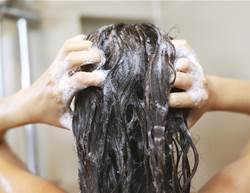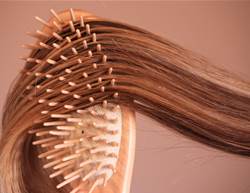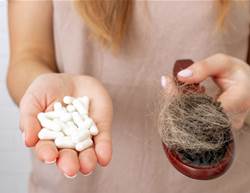Hair oiling comes with a long list of benefits, but with so many options on the market, it can be hard to know which oil is right for your hair type, texture or goals. One oil making waves on social media right now is batana oil, with users claiming stronger, longer, healthier hair after regular use.
Batana oil—also called American palm oil—is derived from the nut of the American oil palm native to Honduras, explains board-certified dermatologist Dr Divya Shokeen. Similar to other popular oils like coconut or argan, batana oil is rich in nutrients and emollients such as antioxidants and fatty acids that nourish the hair and scalp.
But does it actually deliver results? Below, the experts break down what batana oil can do for your hair, whether it really promotes growth and how to use it for smoother, stronger strands.
Batana oil for hair benefits
“The benefits of using batana oil for hair include its deeply nourishing and moisturising properties, which can help boost hair strength and elasticity,” says Dr Shokeen. “It’s also known to reduce frizz, enhance shine and support a healthy scalp.”
While batana oil might assist with hair growth, the evidence is limited, says double board-certified dermatologist Dr Karan Lal. Like many hair oils, its main benefits lie in improving the overall appearance of hair and helping with length retention by reducing breakage. Thanks to its vitamin E content—a powerful antioxidant—batana oil may also help protect both skin and hair from sun damage.
Batana oil for hair growth: does it work?
There’s plenty of anecdotal buzz around batana oil and hair growth—but the science isn’t quite there… yet. Some users report faster growth thanks to the oil’s “high content of vitamin E and essential fatty acids, which promote overall scalp and hair health,” explains Dr Shokeen. “However, scientific evidence to support this claim is limited.”
Like many popular oils, batana oil helps nourish the hair and scalp, which may create a healthier environment for hair to grow—but it probably doesn’t stimulate growth directly, says Dr Lal. Applying it to the lengths of your hair may help reduce breakage, giving the appearance of faster growth over time.
How to use batana oil for hair
There are a few ways to apply batana oil, depending on your needs. Before using it, Dr Shokeen recommends doing a patch test to check for any allergic reaction. Apply a small amount to your inner arm and wait a few hours to make sure your skin tolerates it.
“To use batana oil for healthy hair or potential growth, it can be applied directly to the scalp and hair as a pre-shampoo treatment, leave-in conditioner or hair mask,” says Dr Shokeen. “Massaging a small amount into the scalp may help boost circulation and improve overall hair health.” (Though it’s worth remembering the evidence is still largely anecdotal.)
Dr Lal suggests leaving it in overnight if possible—or for as long as you can before rinsing—to get the most out of it. He adds that while batana oil works for all hair types, it’s especially effective on thick, curly or textured hair due to its rich, penetrating texture. For those with finer hair, use sparingly and wash out shortly after applying to avoid flat, heavy strands.
Batana oil for hair side effects
“Side effects are rare, but some people may experience scalp irritation or allergic dermatitis,” says Dr Shokeen. “Anyone with a nut allergy should use caution, as batana oil is derived from palm nuts.”
Alternatives to batana oil
Not sold on batana oil? You’ve got options. Dr Shokeen and Dr Lal suggest trying oils like castor, peppermint, rosemary or pumpkin seed oil, all of which have more research supporting their benefits for hair and scalp health.










